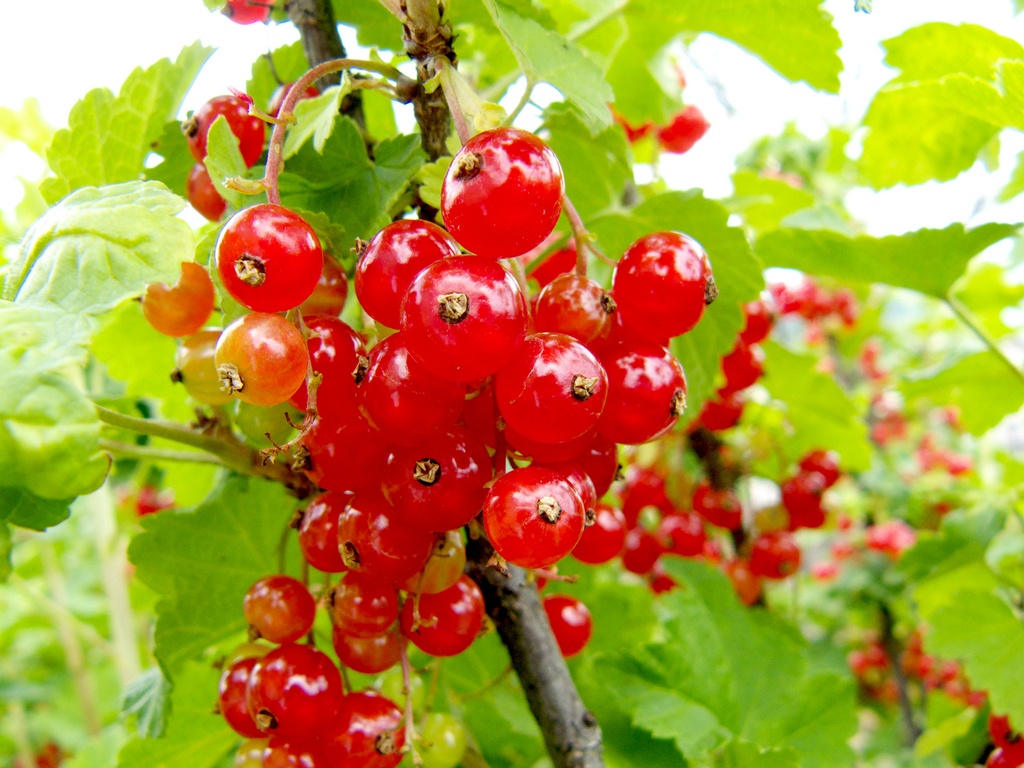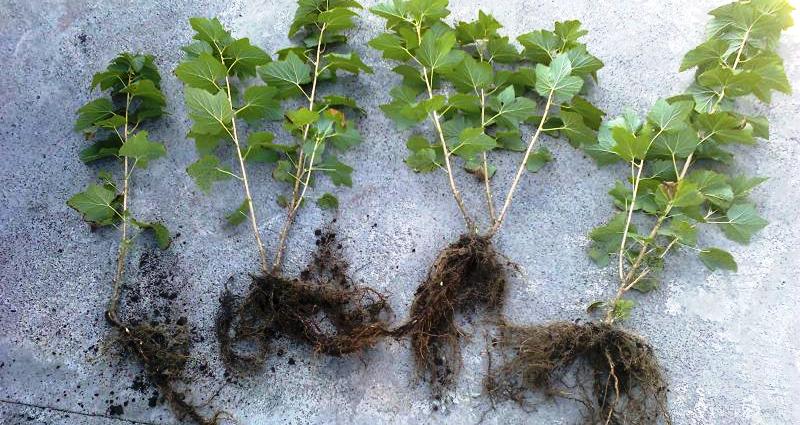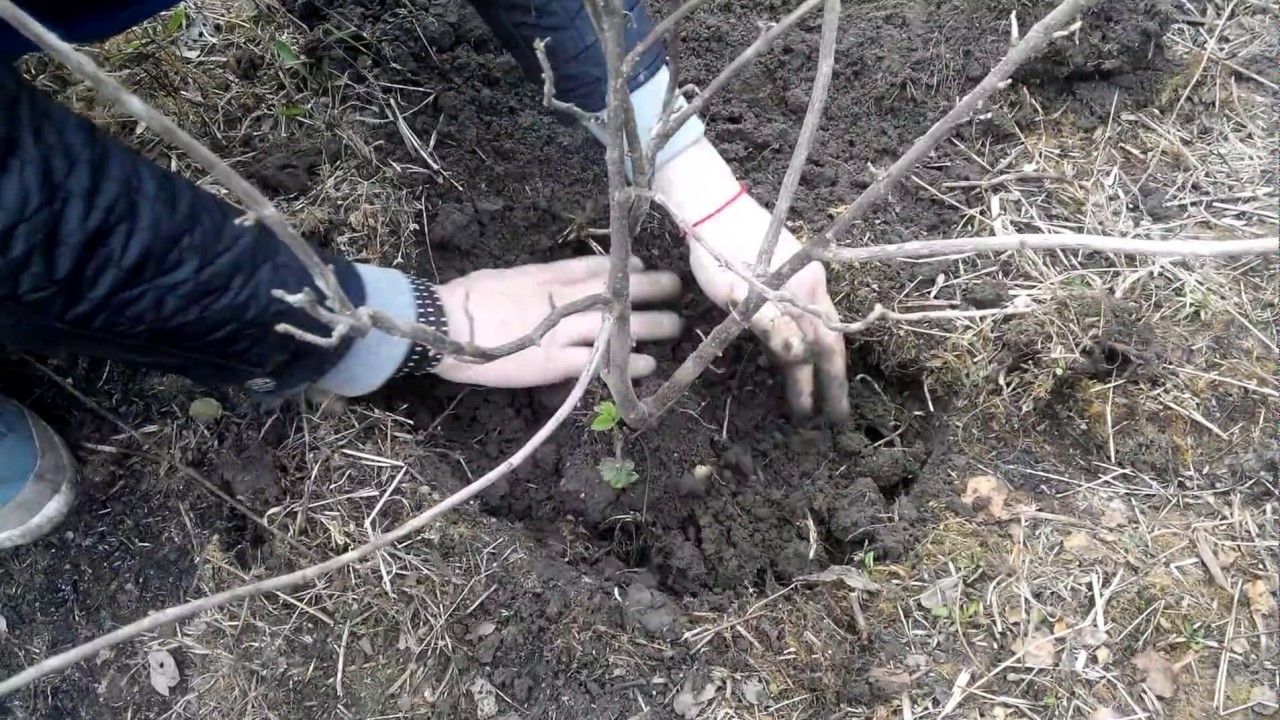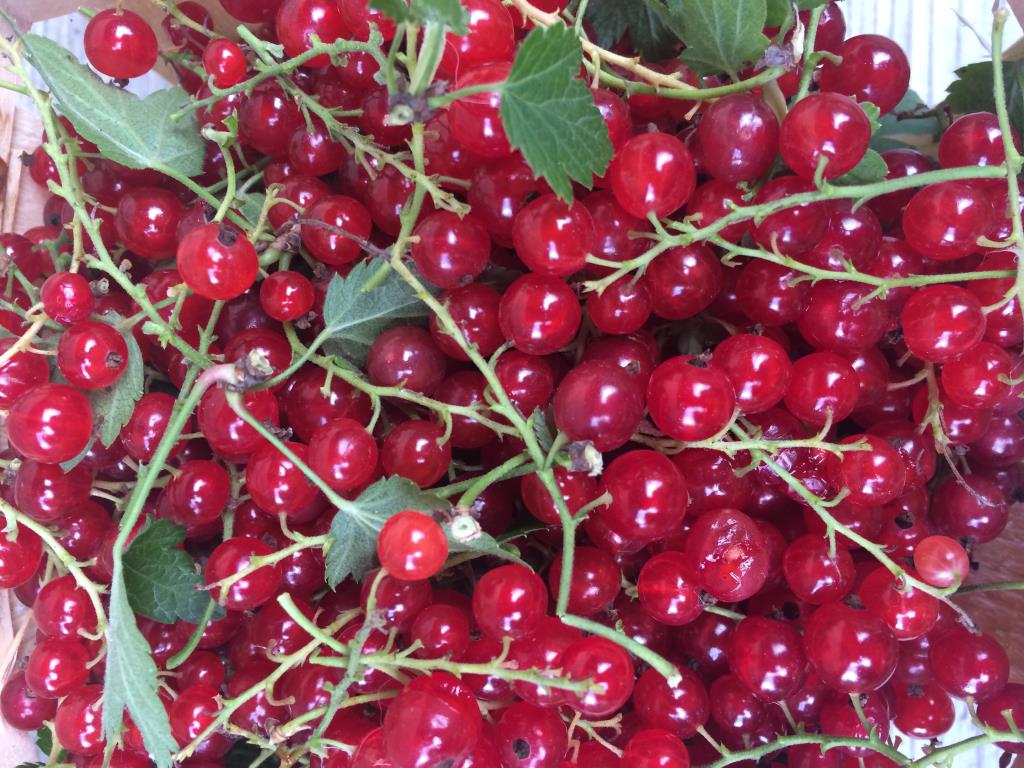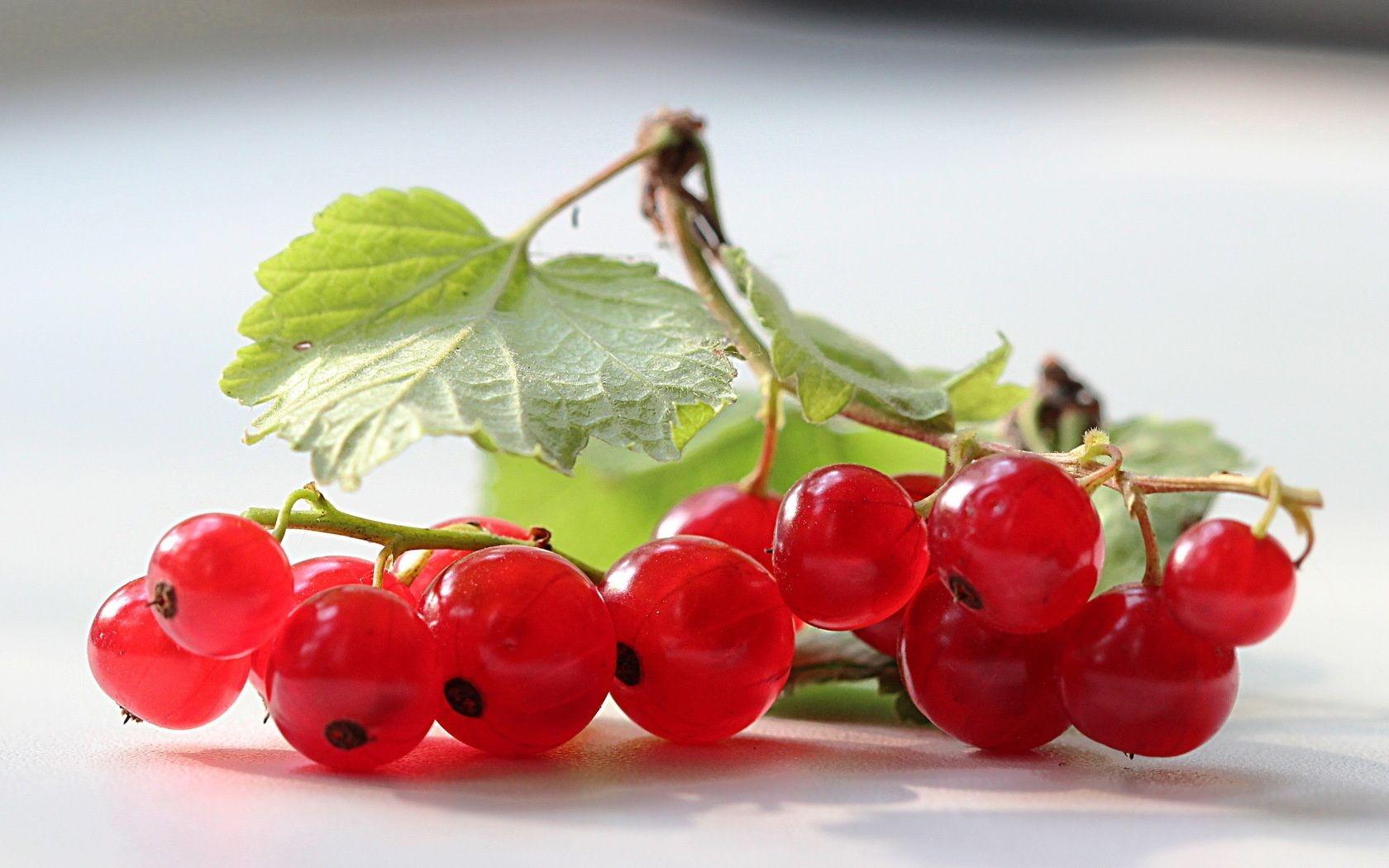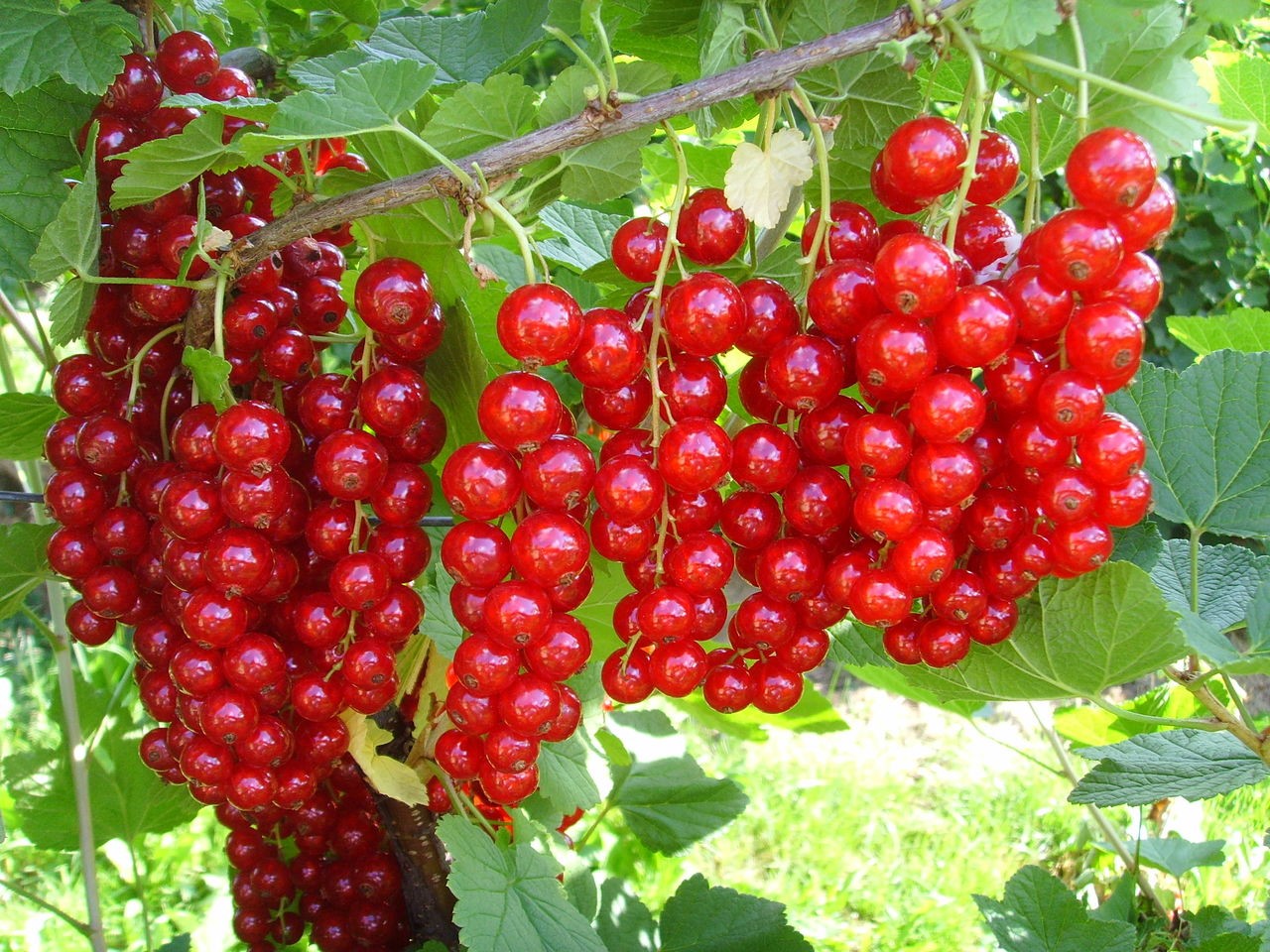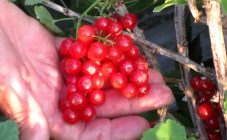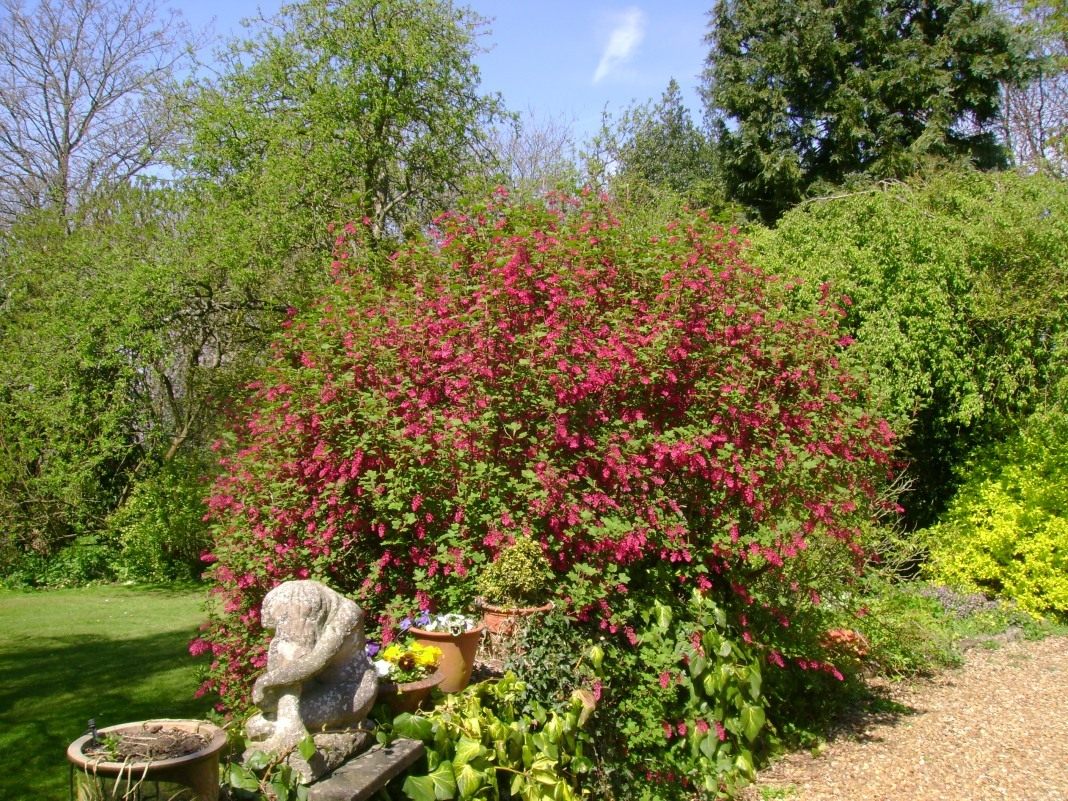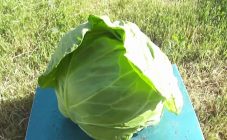In the twentieth century N.K. Smolyaninov and A.P. Nitochkina crossed currants of the varieties Chulkovskaya and Laturnais. As a result of this experiment, the early sweet red currant was born. After that, the berry was entered into the State Register. Since the seventies, it has been cultivated in areas with a capricious climate.
Red currant Early sweet description
The bush is not very large, semi-spreading, has an average growth rate. The plant can grow up to one and a half meters. Shoots are not puffed, the thickness is average. Those that are not stiff have a red-greenish tint. The rest are gray-brown.
The leaves are three, - or five-lobed, medium-sized, leathery, light green, tender. The petiole is green, does not fluff.
Flowers are saucer-shaped, medium, bloom in early spring. They are located on a brush up to 9 cm long, have a greenish-yellow color. The brush is green or reddish.
Like any breeding plant, red currant has its own distinctive features. Best of all, the quality of the shrub can be traced in comparison. For example, take the Ilyinka variety. The berries of this shrub are almost twice as large as those of the variety considered above, but they ripen later. Ilyinka's red currant belongs to mid-season varieties. By the way, in addition to red berries, there is also a black one. Often, gardeners are interested in the latter. Therefore, it is worth paying a little attention to such a delicacy as Ilyinka black currant, a description of the variety of which is presented below.
The variety belongs to the early maturing - the berries ripen at the end of June. In weight they reach up to 6 g, have a rich black color and pamper with a characteristic currant taste. The fruits are juicy, easily transported, do not wrinkle. Also summer residents will appreciate the resistance to frost and the relative unpretentiousness of the bush. In addition, it is attractive as a plot decoration. It has a pyramidal shape and medium size.
Another variety with which the Early is often compared is the Empress currant. Many will like its characteristics too. The berry taste of this bush is really imperial, pleasantly sweet. This species is relatively large-fruited.
Agrotechnics
Landing
Those who decide to start a luxurious beauty with bright red bunches on their site need to know a few tricks for growing it. Much attention should be paid to the composition of the soil. Sweet red currant varieties are very nutritional. Therefore, the place must be chosen carefully. It is recommended to pre-prepare the soil for varietal currants.
To get all the sweetness of the berries, it is recommended to place the shrub on the sunny side of the site. Otherwise, the fruits will be sour and will not have time to ripen. Places near hedges and paths are great.
The soil should be loose and well-drained. Light loam, sandy loam, medium podzolic soil is suitable.
Usually shrubs are planted on a hill where groundwater is at a level of no more than one and a half meters. If this condition is not met, it is recommended to create an artificial hill, otherwise the bushes will hurt very often and will soon die.
The plot must be prepared in advance, approximately 2 months before the intended landing. To do this, you need to do the following:
- dig a hole about half a meter wide and the same depth;
- mix the soil with 7-9 kg of manure or compost;
- add 200 g of superphosphate;
- pour 35 g of potassium sulfate or wood ash.
The resulting mixture is poured into a pit, 2 buckets of water are poured there and mulched with sawdust. If this approach seems difficult, you can apply a faster one by purchasing ready-made fertilizer mixtures.
Drainage is poured into the hole (gravel, pebbles, brick fragments). Then the seedling is lowered and deepened by 8 cm for better fixation. The seedling is covered with earth and tamped. A hole is formed around it and filled with water, mulched. The bush is cut so that no more than 3 buds remain on the shoot.
Care
He is one of the main components of a good yield. It depends on him how the shrub will feel, how many berries it will bring and how long it will delight with fruits. It is necessary to prune the plant in time, protect it from parasites, fertilize, water and weed. Cropping:
- Every year it is necessary to cut off the old composition of shoots affected by frost, parasites and diseases;
- Remove dry branches and shoots that spread along the ground;
- To prevent the plant from becoming infected with the fungus, the cut must be treated with pitch;
- Be sure to use special tools.
Watering must be done three times per season (in drought conditions):
- During the growth of berries;
- After harvesting;
- In the middle of autumn in preparation for the winter season.
Feeding is also important. It should be done according to the following scheme:
- When the shoots grow, you will need to add carbamide (50 g). Apply the same amount after the flowers decline;
- Fertilize with cow or poultry droppings 30 days before fruiting;
- It is worth adding compost every 3 years.
Advantages and disadvantages
It should be said right away that the variety in question has much more advantages. They are as follows:
- Appetizing view;
- Ripe berries do not fall;
- Rises early;
- Frost-resistant;
- Not afraid of parasites and diseases;
- Has a good yield;
- Great taste.
Disadvantages:
- If the bush is improperly looked after, the berry can be crushed;
- Needs frequent feeding;
- Forms growth rapidly.
What kind of red currant is the best is for gardeners to decide. After all, everyone has their own requirements for this berry and an individual approach to its cultivation. But one thing is clear: Early sweet currant is an incredibly tasty dessert. It perfectly refreshes in summer heat and pampers with delicious jam.
